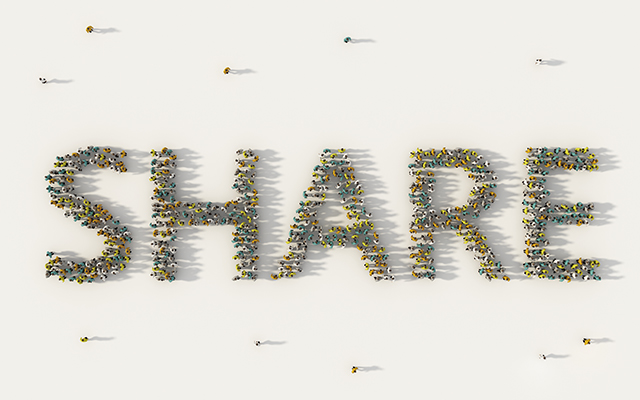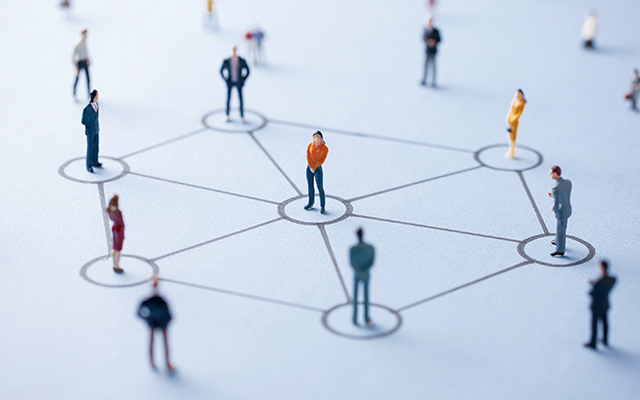지금 공유경제의 영역이 대략 5%인데 앞으로 30%를 넘어설 때부터 자본주의 체제가 무너지기 시작할 것이다. 이에 대해 사람들은 공유지 비극론이나 인간본성론을 거론하며 반박한다. 윌리엄 포스터 로이드(William Forster Lloyd)와 개렛 하딘(Garrett Hardin)은 공유지의 비극론을 주장하였다. 공유지의 비극이란 공동체에 속한 구성원들이 사적 이익을 더 증대하고자 공유자원을 초과 사용해서 공유자원이 손상되고 이용자 모두가 손해 보는 현상을 가리킨다.
하지만, 엘리노어 오스트롬(Elinor Ostrom)은 공유지의 비극론을 정면으로 반박하면서 공유지의 희극론을 폈고 그는 이 연구로 노벨 경제학상까지 받았다. 유럽에서 일본에 이르는 공동체를 실제로 조사한 결과 공유의 희극이 일어났다. 공동체의 구성원들은 사리사욕보다 공동의 가치를 더 앞세우며, 각자의 당면 상황보다 공유 자원의 장기 보존을 더 중시하였다. 공동체에서 구성원이 가장 두려워하는 것이 무엇이겠는가? 그것은 이웃들로부터 따돌림을 당하거나 공동체에서 추방당하는 것이었다. 이에 비하면 양 몇 마리 더 길러서 돈 몇 푼의 이익을 얻는 것은 보잘것없는 것이다.(Elinor Ostrom, Governing the Commons: The Evolution of Institutions for Collective Action)
인간의 본성 또한 이기와 이타, 선과 악이 공존하는 유전적 키메라(genetic chimera)이며, 공동체에서는 서로 선과 이타심을 조장한다. 리처드 도킨스의 지적대로 인간은 생물학적 존재로서 이기적 유전자가 조종하는 생존기계이다. 하지만, 홀로 사냥을 나가서 한 달에 사슴 3마리를 잡던 원시인이 10명이 짝을 이루어 사냥한 후 평균 40마리를 잡았다면, 자신의 몫이 4마리로 늘어났고 맹수의 공격도 힘을 합쳐서 더 쉽게 막아냈을 것이다. 인간은 사회를 형성하여 서로 협력을 하며 혈연적 이타성(kin altruism), 집단적 이타성(group altruism), 호혜적 이타성(reciprocal altruism), 윤리적 이타성(ethic altruism)을 증대해 왔다. 인류 역사 700만 년 중 99.9%의 기간 동안 인류는 평등한 공동체를 유지했고 서로 이타심과 선을 조장하였다. 농경사회도 8000년 동안 평등한 공동체였으며, 불평등한 사회는 쟁기농법을 개발하여 생산성 차이가 10배가 난 이후 6000여 년에 지나지 않는다.(Amy Bogaard, <The Farming-inequality nexus; new insights from ancient Western Eurasia>)
인류사를 보면 새로운 에너지 체제와 새로운 커뮤니케이션 매개체를 창출했을 때 대변혁이 발생하였기에, 지속가능한 발전과도 결합할 수 있기에, 인간이 근본적으로 사회적 협력을 하고 타자의 고통에 공감하는 존재이기에, 밀레니엄 세대는 소유권보다 접근권을 선호하고 공감력이 뛰어나기에 공유경제는 발전할 것이고 머지않아 자본주의 체제를 대체할 것이다.
그럼에도 간과할 수 없는 것은 모든 것을 시장체제의 상품으로 전환시키는 자본주의 체제의 힘이다. 이 체제는 탄소세와 같은 좋은 개혁책도 시장체제의 상품으로 변형시켜서 무력화하였다. 에어비앤비, 우버, 태스크래빗 등이 공유경제를 표방하였지만 이는 허울일 뿐, 안으로는 노동자를 착취하고 밖으로는 플랫폼을 매개로 자투리의 가치를 모아 지대(地代, rent)로 전환하여 막대한 이윤을 추구했다. 무엇보다 자본주의 체제에서 변화의 주체가 노동자가 아니고 기술혁신이라면, 그렇게 하여 이루어진 변화는 노동자와 인간을 위한 방향으로 진행되기는 어려울 것이다.
Now the sharing economy accounts for around five percent of the whole economy, and the capitalist system would begin to give way to the sharing economy when the proportion exceeds thirty percent. People refute this claim, citing the Tragedy of the Commons and the human nature theory. The tragedy of the commons is a concept used by William Forster Lloyd and Garrett Hardin. This refers to a situation in which individual members of a community overuse a shared resource to pursue their own interest, resulting in the depletion of the shared resource.
However, Elinor Ostrom refuted the concept of the tragedy of the commons, suggesting the ways of enabling the so-called comedy of the commons, and was awarded the Nobel Prize in Economic Science for this study. Studies on communities in Europe and Japan revealed that the tragedy of the commons did not happen in the real world. The members of communities acted in the public interest, rather than their self-interest, regarding the long-term preservation of a shared resource as more important than their own circumstances. What is most feared by members of a community? According to the studies, they feared being ostracized by their neighbors and being thrown out of their community. By comparison with such fears, raising a few more sheep to make a small profit is insignificant. (Elinor Ostrom, Governing the Commons: The Evolution of Institutions for Collective Action)
Haman nature is a genetic chimera in which selfishness and altruism as well as good and evil coexist, and in communities, people are encouraged to be good and altruistic. As Richard Dawkins points out, humans as biological beings are survival machines programmed by selfish genes. But if a primitive man, who caught three deer per month when he went hunting alone, joined as a member of ten hunters and caught an average of forty deer, he would have been able to get four more deer as his share and more easily defend against attacks by wild beasts with the help of fellow hunters. Humans have formed society and helped each other, increasing kin altruism, group altruism, reciprocal altruism, and ethic altruism. For almost 99.9 percent of seven million years of human history, humans have maintained equality in communities, encouraging each other to be good and altruistic. The early agricultural societies were based on equality for eight thousand years, and they only became unequal for the next six thousand years after the invention of plows contributed to a ten-fold increase in productivity. (Amy Bogaard, The Farming-inequality nexus: new insights from ancient Western Eurasia)
The sharing economy will develop and replace the capitalist system in the near future, since a) human history shows that the advent of new energy systems and new communication media led to revolutions; b) the sharing economy can be combined with sustainable development; c) humans are essentially cooperative and relate to others’ pain; and d) Millennials are highly empathic and prefer access over ownership.
Nevertheless, what cannot be overlooked is the power of the capitalist system to convert everything into products of the market system. The system negated good reform measures like a carbon tax by converting it into a market product. Companies such as Airbnb, Uber, and TaskRabbit describe themselves as sharing economy platforms, but in fact, they have only made a huge profit by exploiting their workers and turning what they collected through their platforms into rent. Above all, if what brings change is not laborers, but technological innovation, in the capitalist system, it would be difficult for such change to move in the direction for laborers and humans.




